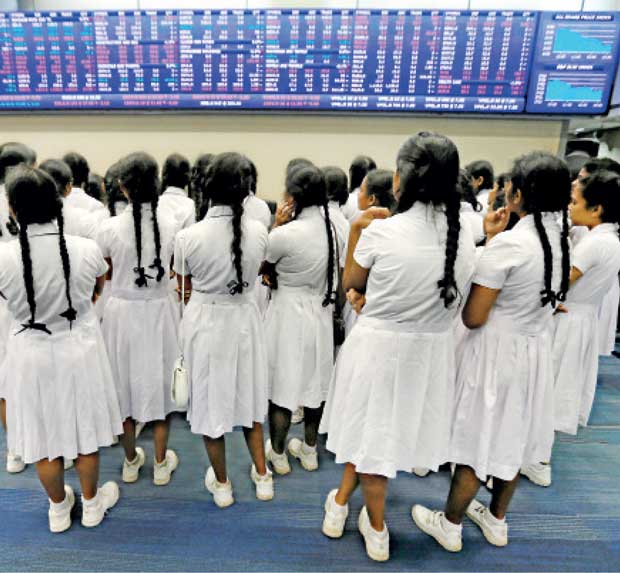27 Dec 2017 - {{hitsCtrl.values.hits}}

 Stock market is not for profit-making only, meaning that you can also incur losses as well. Accordingly, those that expect only profit should not invest in stock market, which is riskier than other investment opportunities.
Stock market is not for profit-making only, meaning that you can also incur losses as well. Accordingly, those that expect only profit should not invest in stock market, which is riskier than other investment opportunities.
Before all, one must be aware of the risk and then try to mitigate the risk by diversifying the money. We know that putting all the eggs into one basket is a bad investment. Companies have no same risk. Their risks are completely different based on their profitability, forecasts on future cash flows and their management.
How much money you can put at risk is the most important question that you, as an investor, should ask. In other words, just because you buy 1000 stocks at Rs.10 each, spending Rs.10,000 does not mean you put Rs.10,000 at risk. When daily price fluctuations of that particular stock may be Rs.2, you really put only Rs.2000 at risk. There are special reasons whereby we have to hope sudden price falls. Severe natural disasters impacting on insurance companies, quarterly submitted accounts that signal minus growth for the company can be given as examples.
However, when the stocks that you have invested are going down drastically and continuously, try not to buy again because you shouldn’t catch a falling knife. Speed of price fluctuations is extremely important when decisions are made concerning buying or selling. Only if price is going down gradually, you can make an average price.
For example, the stock has gone down from Rs.10 to Rs.8, making a loss of Rs.2000. When you buy another 1000 shares at Rs.8 each, your average price becomes Rs.9, halving your previous loss by Rs.1000. Thereafter, you can sell your stock and move out of the company. This is the concept of averaging in the
stock market.
As mentioned above, when prices are going down fast, trying to make prices average will put more money at risk. Therefore, you are recommended to do so once or twice only. Doing more than that makes you bankrupt.
As risk comes from not knowing, you have to be more aware of stocks. Two kinds of risks can be identified. One is attached to a particular stock, while another is attached to the entire stock market including the industry the company belongs to. In other words, it can be called the risk at micro and macro level. You may not be able to mitigate macro-level risk impacting on the whole stock market such as tax, new regulations and global economic repercussions, etc.
You must be aware of the stock that you are going to buy. Company stocks stay at various stages; to put it simply, let’s say, infant, matured and older stages. Stocks being traded at the infant stage are at discounted prices, more probably, less than net assets per share ratio. On the contrary, certain companies that have no strong assets base but have good reputation and continuous growth don’t require such a strong assets base to be among best stocks.
Irrational investors are so greedy that they come to the market, when it is at peak and stocks of companies have exceeded even the net assets per share ratio, giving about 30 percent or 40 percent return that an investor should expect fairly. Rational investors never expect more than 50 percent, as it is too risky.
You cannot forget about the industry which your company belongs to, as whatever repercussions the industry may have, can reduce your profit or put your money at risk. There are sectors under which every company has to be listed. You must be aware of your sector as well.
Stock market is by nature a risky investment option. If you properly invest, you can claim for a good return. Furthermore, if you can mitigate the risk, you can be the winner.
(Amila Muthukutti is an economist)
10 Jan 2025 1 hours ago
10 Jan 2025 2 hours ago
10 Jan 2025 4 hours ago
10 Jan 2025 4 hours ago
10 Jan 2025 4 hours ago